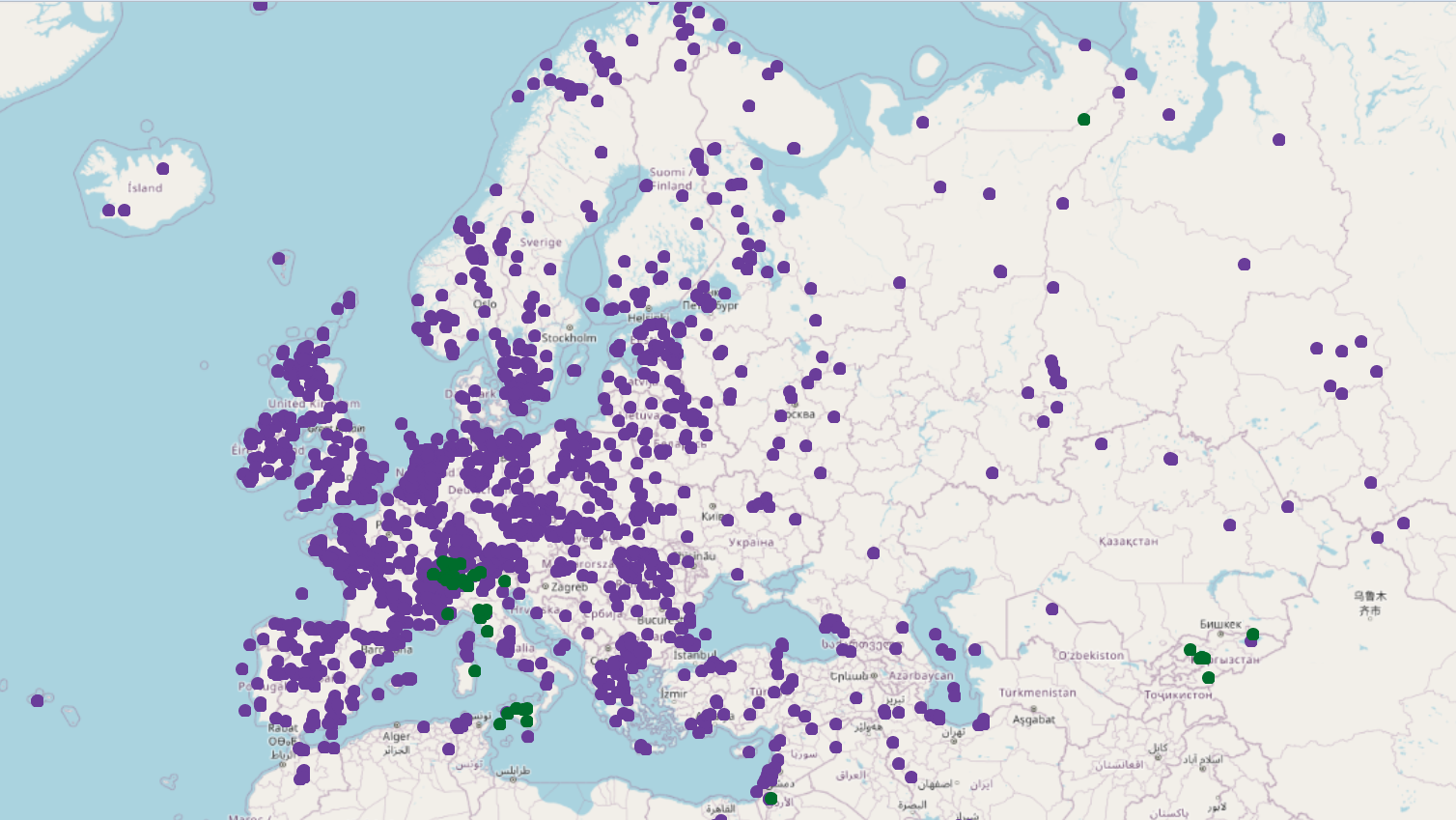- Home
- Publications
- PAGES Magazine
- The European Pollen Database In Neotoma: Expanding Horizons To New Proxy Communities
The European Pollen Database in Neotoma: Expanding horizons to new proxy communities
Gil-Romera G, Giesecke T & Kuneš P
Past Global Changes Magazine
30(2)
130
2022
New scientific discoveries are usually achieved based on accumulated knowledge. We are "standing on the shoulders of giants", which is especially true when it comes to the utilization of vast knowledge held in public data repositories (Nieto-Lugilde et al. 2021). These open-access, often community-based data collections are critical to answer complex questions in any scientific domain. This is particularly important in the case of paleoscience, where continental-scale data collections allow us to study environmental changes in four dimensions. Comparing trends of change across several sites permits the separation of local site-specific changes from regional or continental patterns driven by climate and humans.
The European Pollen Database (EPD; europeanpollendatabase.net) has been one of the major public pollen data repositories for more than 30 years, adhering to the FAIR principles (Findability, Accessibility, Interoperability, and Reusability of digital assets) even before they were widely adopted (Wilkinson et al. 2016). The EPD serves as a tool to answer paleoecological (Giesecke et al. 2019), paleoclimate (Davis et al. 2003), and nature–human related research (Fyfe et al. 2015). The database is developed and curated by a volunteer group of data stewards led by Michelle Leydet. Currently, the EPD contains 2456 sites, including 5071 datasets integrating the Alpine Pollen and Archaeological Database (ALPADABA) (Fig 1). To provide timely data access and visualizations, the EDP community decided to join Neotoma (neotomadb.org) as a constituent database, thus contributing to Neotoma's development. Currently, all public data from the EPD are available via Neotoma.
 |
|
Figure 1: Current sites (2456) in the European Pollen Database (June 2022). Green dots belong to the ALPADABA database (56 sites). All sites have been successfully uploaded to Neotoma. Source: Neotoma explorer: apps.neotomadb.org/explorer |
While the number of datasets in the EPD increases steadily, there are regions for which published data are less available. The PAGES-supported in-person EPD Open Science Meeting (pastglobalchanges.org/calendar/128846; epdweblog.org/news-blog)gave another stimulus to scientists to submit their data to the EPD. The migration of the EPD to Neotoma opens new opportunities for storing other paleoecological proxy data, and for that reason the meeting aimed to attract other proxy communities to showcase Neotoma and start discussions. Therefore, topics of keynote talks were chosen to highlight some proxies that are well connected to pollen data: charcoal (E. Dietze), sedimentary ancient DNA (I. G. Alsos and U. Herzschuh), testae amoeba (K. Marcisz), biomarkers (C. De Jonge), vertebrate fauna (D. Schreve), and plant macroremains (L. Amon). T. Giesecke provided an introduction with insights on the history of pollen databases and the EPD, and J. Williams gave an overview of Neotoma. H. Seppä gave a talk on the application of the modern pollen dataset in climate reconstructions, and O. Mottl presented new tools and a workflow to analyze continental-scale pollen data held in Neotoma for specific research questions. The program was completed with two keynotes showcasing exciting local research programs, combining pollen data with information from archaeology (J. Kolář) and the use of herbaria collections to study recent continental-scale spread of neophytes (P. Mráz).
The EPD community sees the need to transfer the knowledge and skill required using the data in standard and sophisticated analyses in order to close the perceived gap between data producers and data users. To this end, attendees had the opportunity to participate in two training workshops out of seven different options: the use of non-pollen palynomorphs in multi-proxy studies (L. Shumilovskikh); how to produce quantitative land-cover reconstructions (M. Theuerkauf and V. Abraham); chronology building using classical and Bayesian statistics (P. Kuneš and G. Gil-Romera); the use of the Neotoma R package (S. Dominguez); inferring fire properties from charcoal timeseries using R (W. Finsinger); pollen-based climate reconstructions in R (B. Davis); and using Tilia to create pollen diagrams and to upload data to Neotoma (M. Leydet, G. Gil-Romera, and I. De Wolf). Participants highlighted the importance of these educational efforts during the workshops, judging them to have a strong impact on their future research and scientific development. In addition, this was the first face-to-face meeting after the COVID-19 pandemic for many attendees, becoming one of the very few occasions that early-career researchers may have to establish stronger networks with their peers early in their careers.
The EPD 2022 meeting was a success in terms of participation (112 people) and inclusivity: more than half were female (70%), with a high proportion of female keynote speakers. There was an impressive representation of early-career researchers (72%) and geographical locations (23 countries).
affiliationS
1Department of Ecology, Philipps-Marburg University, Marburg, Germany
2Instituto Pirenaico de Ecología, Spanish Scientific Research Council (IPE-CSIC), Zaragoza, Spain
3Department of Physical Geography, Utrecht University, The Netherlands
4Department of Botany, Faculty of Science, Charles University, Prague, Czech Republic
contact
Graciela Gil-Romera: graciela.gil ipe.csic.es
ipe.csic.es
references
Davis BAS et al. (2003) Quat Sci Rev 22: 1701-1716
Fyfe RM et al. (2015) Glob Chang Biol 21: 1197-1212
Giesecke T et al. (2019) Nat Commun 10: 5422
